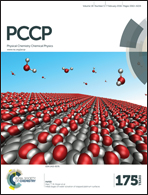A comparison of the abilities of natural rubber (NR) and synthetic polyisoprene cis-1,4 rubber (IR) to crystallize under strain at high strain rates
Abstract
Strain induced crystallization (SIC) of a natural rubber (NR) and a synthetic rubber (IR) with a high amount of cis-1,4 units (98.6%) is studied, thanks to in situ wide angle X-ray (WAXS) experiments at room temperature performed in a large range of strain rates. During stretching at a low strain rate (4.2 × 10−3 s−1), SIC in IR occurs at a larger stretching ratio than in NR. As a result, the crystallinity index at a given stretching ratio is lower in IR than in NR, in spite of the similar crosslink densities of the chains involved in the crystallization in both materials. This lower ability for crystallization in IR is attributed to the presence of branching along its backbone and its lower stereoregularity. Conversely, dynamic experiments performed at high strain rates (101/102 s−1) show for both materials a similar ability to crystallize. This unexpected result is confirmed by monotonic tensile tests performed in a large range of strain rates. The reason is thermodynamic: the chain extension plays a predominant role compared to the role of the microstructure defects when the strain rate is high, i.e. when the kinetics of the crystallite nucleation forces the crystallization to occur at a large stretching ratio. A thermodynamic model enables qualitative reproduction of the experimental results.


 Please wait while we load your content...
Please wait while we load your content...